The Local Development Programme is a story of how Polish towns are spreading their wings. It's also a tale of relationships without which much would be impossible, and with them, everything is possible.
Let's start with a list. I wonder if anyone can do it in one breath.
3, 2, 1, start: Cieszyn, Hajnówka, Hrubieszów, Jarocin, Jarosław, Jasło, Jelenia Góra, Kędzierzyn-Koźle, Konin, Krosno, Łomża, Nisko, Opoczno, Ostrowiec Świętokrzyski, Ostrów Wielkopolski, Piła, Przemyśl, Rydułtowy, Stalowa Wola, Starachowice, Tarnów, Tomaszów Mazowiecki, Włocławek, Zabrze, Zawiercie, Zgierz, Złotów, Żary, and Żywiec.
Stop, you can take a breath.
What Connects These 29 Towns?
If someone asked what these 29 towns have in common, probably the two most common answers would be: "they are in Poland" and "they are not large metropolises".
However, something else connects them. They all benefited from the EEA and Norway Grants under the Local Development Programme.
I can already hear the yawn. Another number, another million, another statistic, another programme. I myself would yawn at such information.
That's why I decided to give this programme a face. I talked to a man who worked daily with local government officials from these 29 towns. Our hero is Kamil Wieder and his team. Kamil is (attention, there will be a long title, please don't yawn) the head of the Local Self-Government Support Unit in the Department of Assistance Programmes at the Ministry of Development Funds and Regional Policy. Kamil and the unit's employees are primarily involved in implementing two major tasks. One of them is the Local Development Programme, and the other is revitalization.
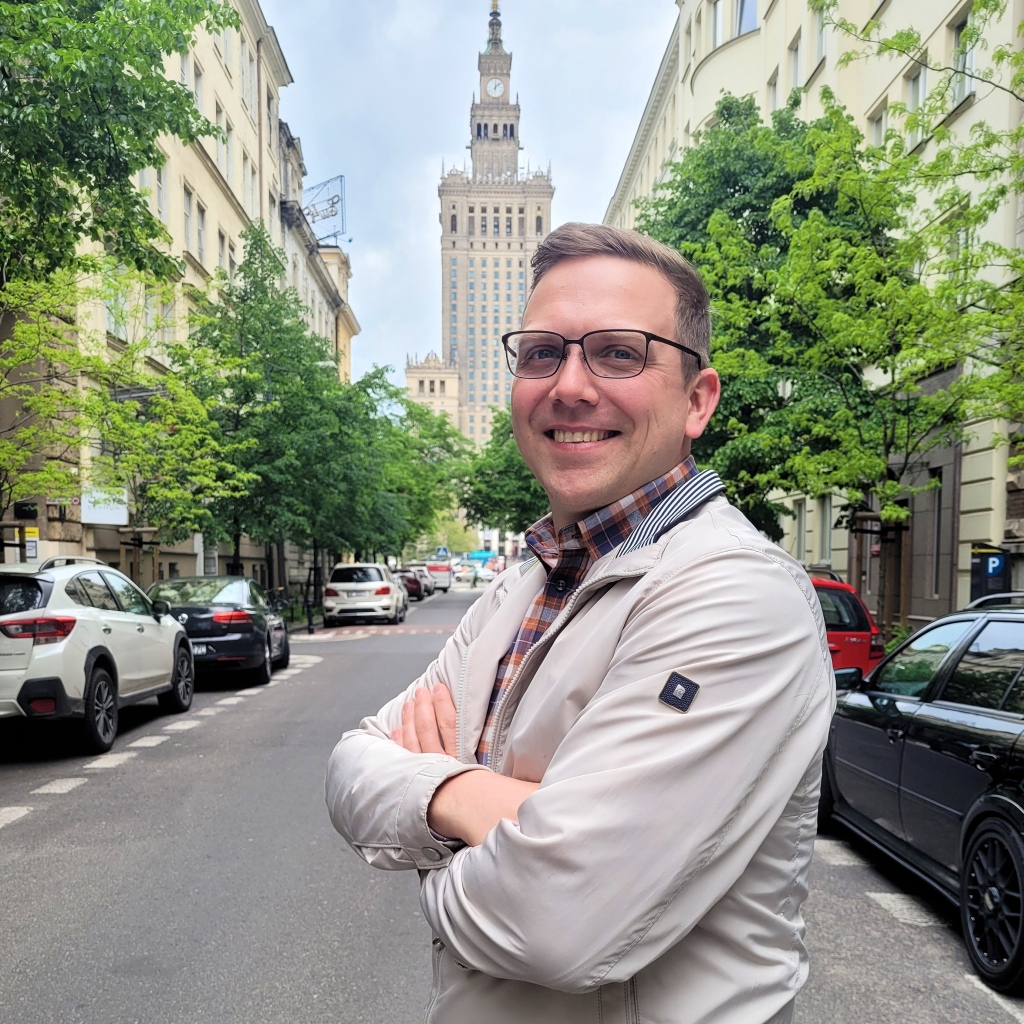
Kamil Wieder - Our guide through this story
Local Development Programme - What's It All About?
Before we ask the guide for details, like any good tourist, let's do our own research. After all, someone who goes to Paris, for example, knows the basics. He knows that it is the capital of France and that there is the Eiffel Tower, the Arc de Triomphe, and the Louvre. I promise it will be brief.
The Local Development Programme, in short, is over €130 million (currently about PLN 550 million) for medium-sized Polish towns. A list of 255 such towns was created a few years ago by the Polish Academy of Sciences. Scientists found from research that many of these towns are losing their previous functions, simply "shrinking" - economically and demographically - or are threatened by such "shrinkage".
Therefore, Poland and the countries that make up the EEA and Norway Grants (Iceland, Liechtenstein, and Norway) agreed to create a programme that would help these towns spread their wings.
As they decided, so they did. On March 25, 2019, the then Minister of Investment and Development, Jerzy Kwieciński, and the Norwegian Ambassador to Poland, Olav Myklebust, signed an agreement on the launch of the programme.
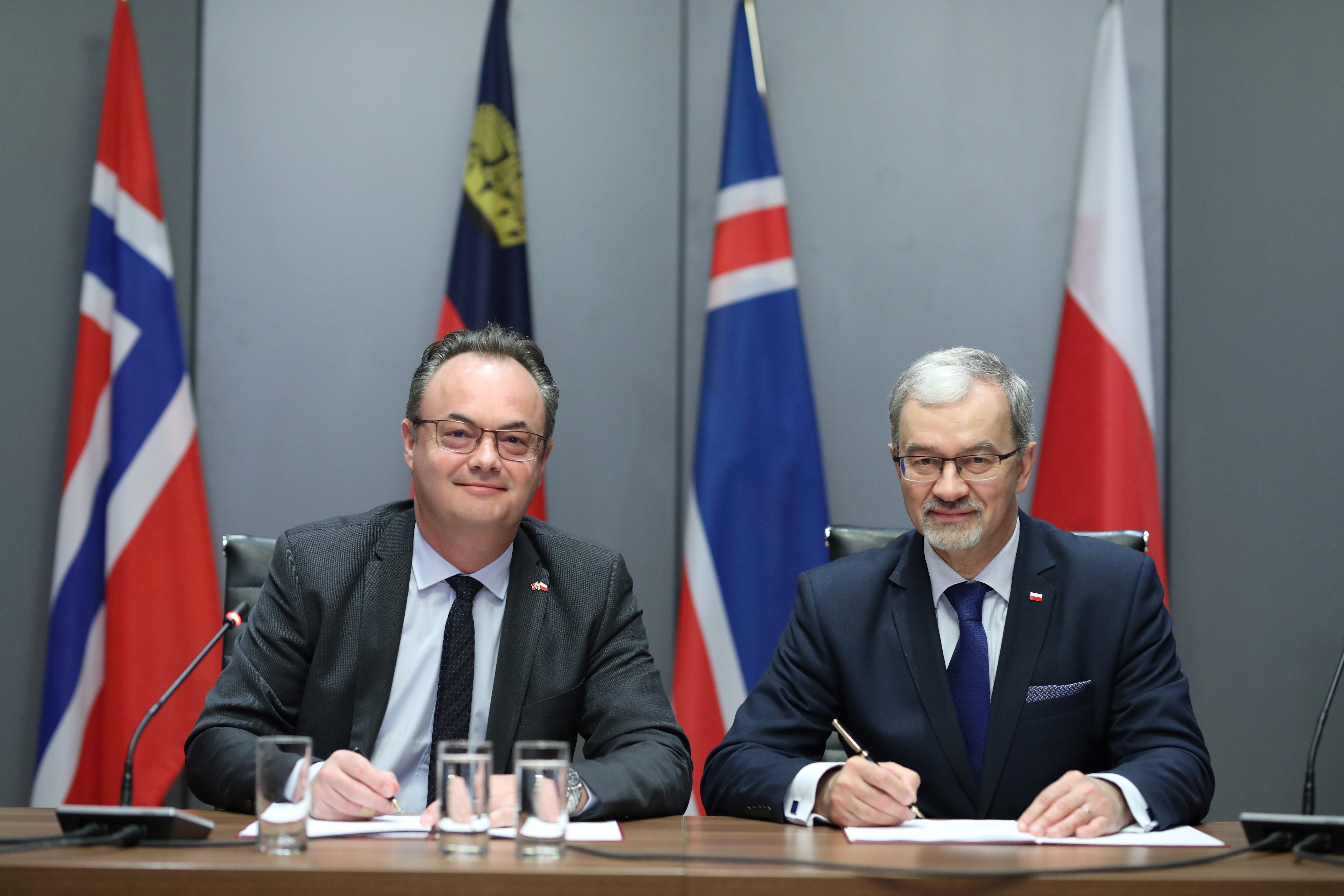 Norwegian Ambassador to Poland Olav Myklebust and Minister of Investment and Development Jerzy Kwieciński are signing an agreement on the Local Development Programme in March 2019
Norwegian Ambassador to Poland Olav Myklebust and Minister of Investment and Development Jerzy Kwieciński are signing an agreement on the Local Development Programme in March 2019
A moment later, on May 6, 2019, a call for proposals was announced. It was the first call launched under the 3rd edition of the EEA and Norway Grants for Poland. In turn, on May 30, an agreement was signed with the Association of Polish Cities (APC). It was experts from ZMP and the Institute of Urban and Regional Development who later worked with local government officials, training them and guiding them through the meanders of projects.
Towns were first asked to submit project outlines. The fact that 213 such outlines were submitted shows how much the programme was needed. 54 towns qualified for the next stage and invited to submit Complete Project Proposals, i.e., full and detailed funding applications. Finally, in July 2021, 29 winners were selected. Each of them received €3.5 million in funding (about PLN 15 million). This is both a lot and a little at the same time.
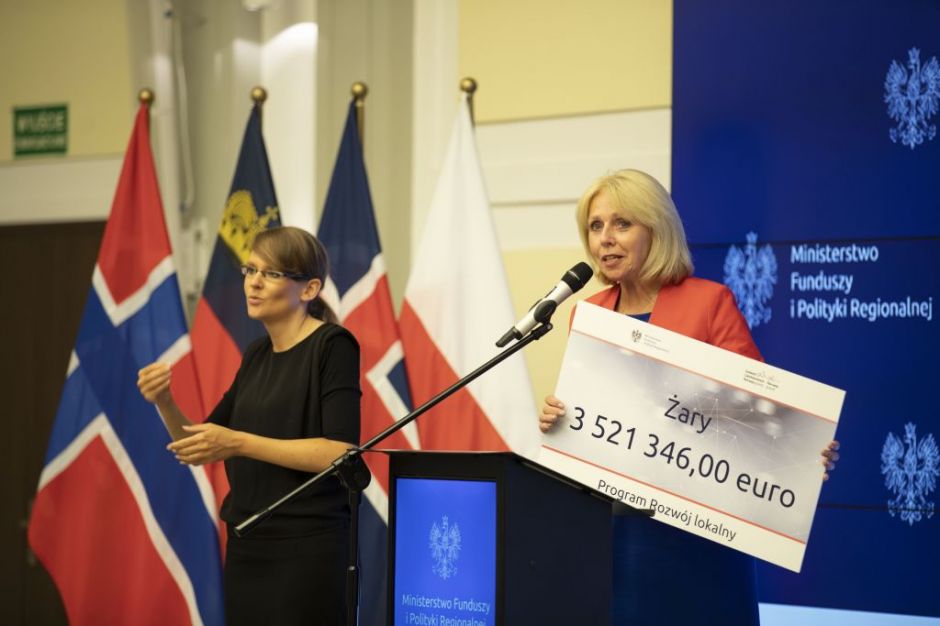
Danuta Madej, the then mayor of Żary, gives a speech during a press conference at the Ministry of Development Funds and Regional Policy in July 2021. During the conference, symbolic checks were presented to the winning towns
Comprehensive Projects
So I ask Kamil Wieder what he would see as the strength of this programme. Especially since local governments have a very rich offer of investment financing from other sources, primarily from European Funds.
"The first thing is the comprehensiveness of the projects. Investments were always combined with soft measures. In our program, everything was well thought out. If a local government was building, for example, a social activity center, they also added activities in this center and planned who would manage the place" – explains Kamil.
I myself, writing articles, looked at several projects and can confirm Kamil's words.
The first example that comes to mind is Hrubieszów. Seniors and young people there have their own places, which were created thanks to the EEA and Norway Grants. Last year, the manor house at 9 Staszica Street was renovated there. Today it serves as a Day Stay Center for Seniors. Seniors there have various activities that help them live with dignity and joy. What's more, they had these activities even earlier, in a temporary location during the renovation of the manor house. They learned, for example, relaxation techniques and talked to police officers about scams that seniors are exposed to.
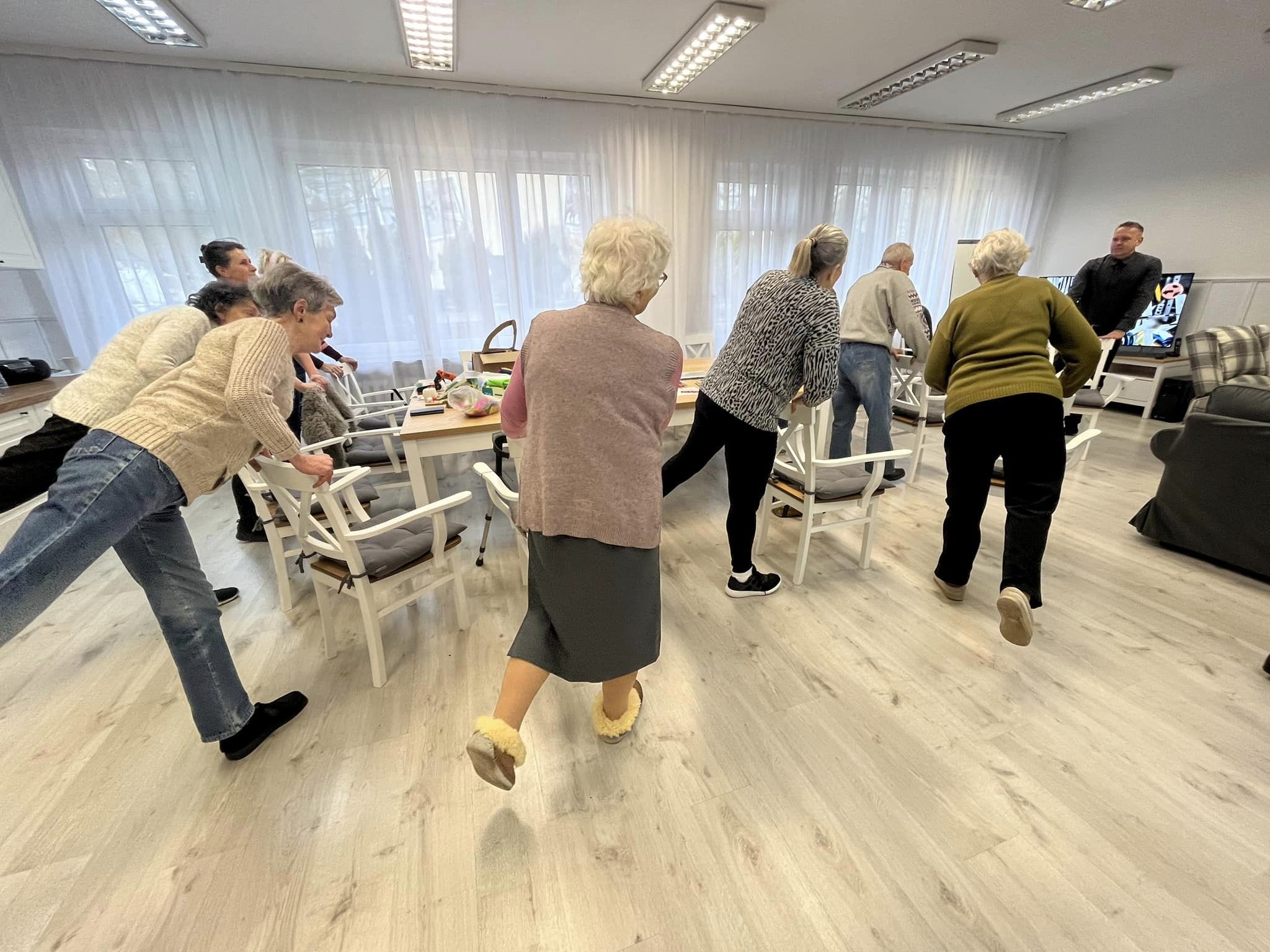 Gymnastics classes for seniors in Hrubieszów (photo: Dzienny Dom Pobytu dla Seniorów)
Gymnastics classes for seniors in Hrubieszów (photo: Dzienny Dom Pobytu dla Seniorów)
In turn, young people have been using the ConceptLAB robotics lab since January 2024, which was created at Primary School No. 3 in Hrubieszów. The EEA and Norway Grants financed not only the equipment of the lab, but also, for example, programming and design classes.
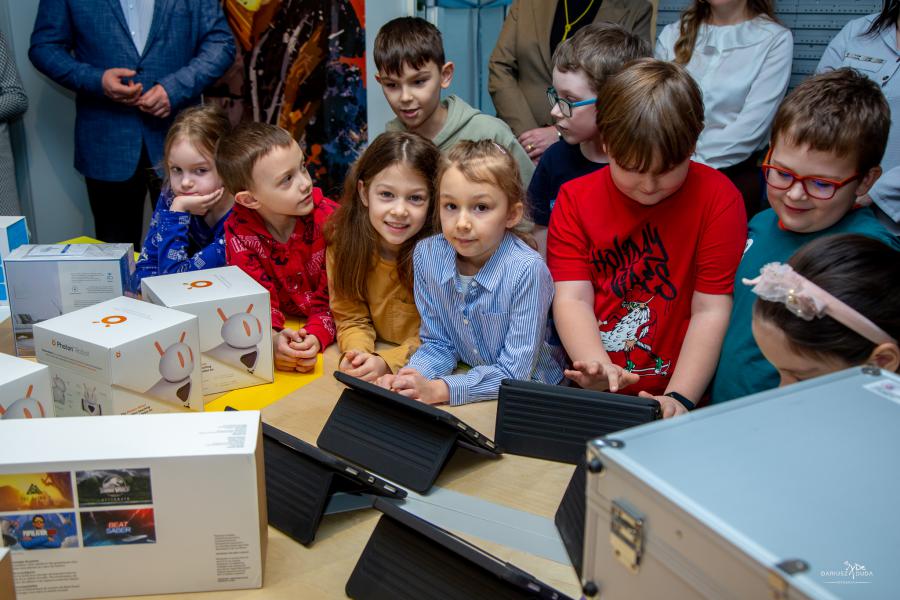
The opening of the ConcepLAB robotics laboratory in Hrubieszów (photo: Hrubieszów City Hall)
In Piła, the Piła Institute of Education and Integration was created. It is located in the so-called "Okrąglak" - a building from 1920, located at 32a Okólna Street. The building used to be a kindergarten, then it served people in homelessness crisis. The town authorities invested in the renovation of the Okrąglak and its adaptation to the needs of people with disabilities and seniors. There is an elevator, a ramp at the entrance to the building, and parking spaces. The Institute is a place that serves intergenerational integration. It helps older people in their development and activation, and for young people it is a space for active leisure and drawing on the experiences of seniors. Various activities take place here for both groups.
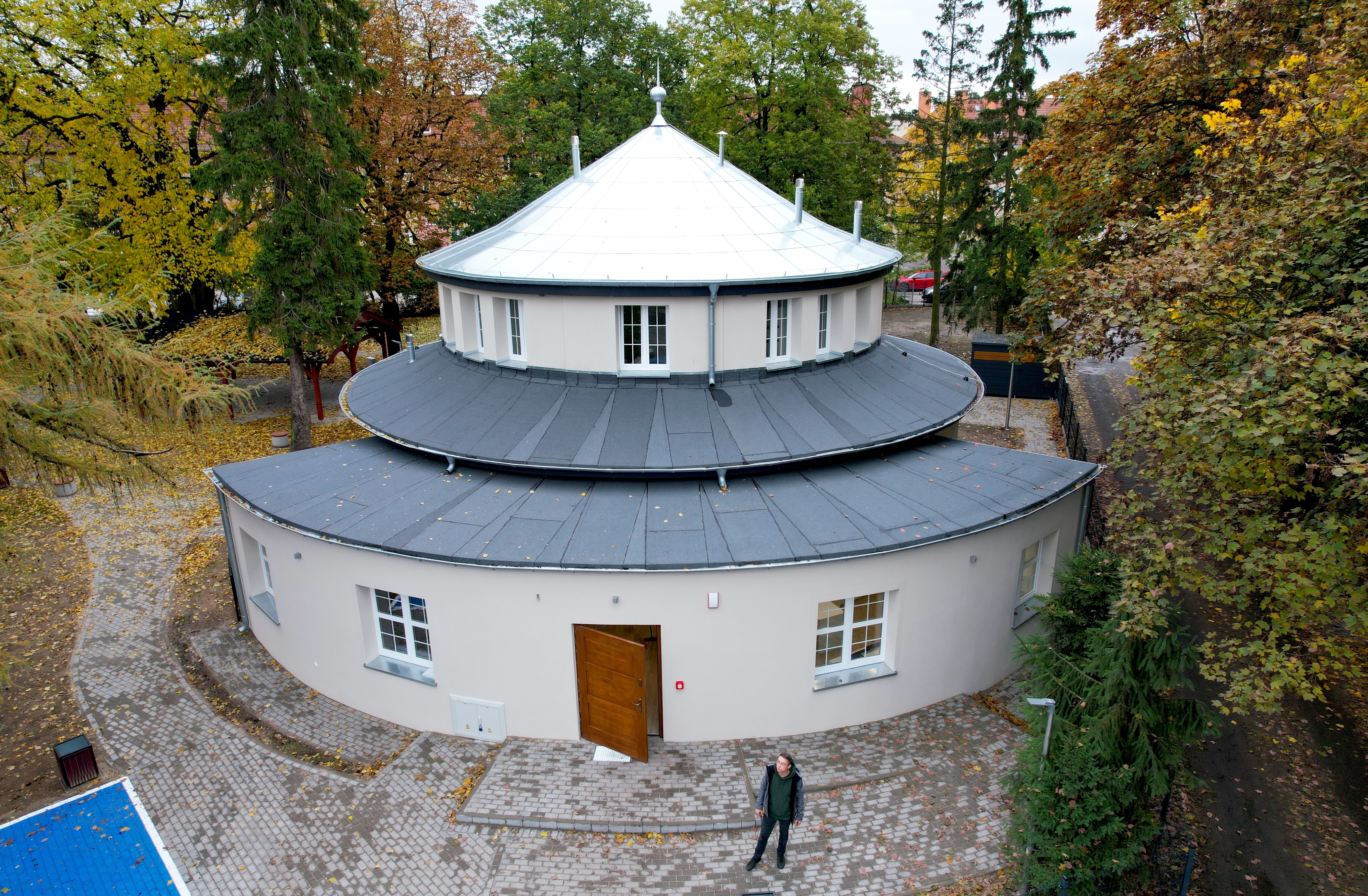 The so-called "Okrąglak" - the seat of the Piła Institute of Education and Integration (photo: Piła City Hall)
The so-called "Okrąglak" - the seat of the Piła Institute of Education and Integration (photo: Piła City Hall)
Problems Crushed in the Bud
Kamil Wieder also points to a second feature that made the Local Development Programme unique.
"Interpersonal relations. Compared to the European Funds, we didn't have a large programme. Thanks to this, we were able to build relationships between the ministry and local governments. Each project had its own guardian in the ministry. Local government officials tell us that they have not yet encountered such an individual approach" – emphasizes Kamil.
"Even in a difficult situation, when something bad happened, our beneficiaries came to us with the problem in the bud and we worked together on a solution. We all simply cared" – he adds.
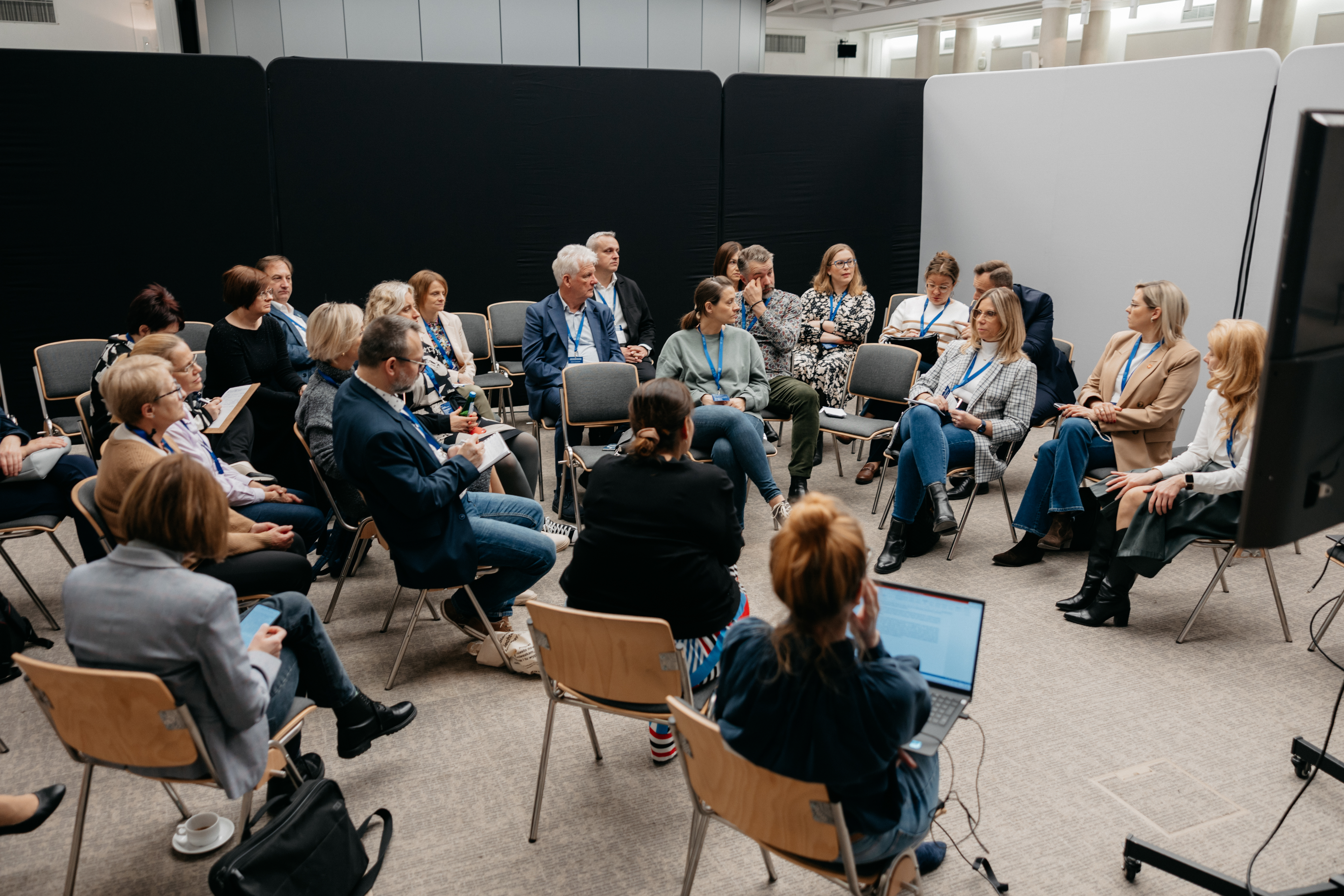 Working in groups - beneficiaries of the Local Development Programme share their experiences at the programme's closing conference in November 2024.
Working in groups - beneficiaries of the Local Development Programme share their experiences at the programme's closing conference in November 2024.
Cooperation and Friendships
The third element that my interlocutor draws attention to is international cooperation with Norwegian cities.
"The scale of this cooperation exceeded our expectations" – Kamil is excited.
I'm not at all surprised. If you look at it from a bird's-eye view, we only have dry data. Of the 29 cities, 17 had a Norwegian partner. But if you present it with a specific example, emotions appear in this dry statistic.
I remember how at the beginning of 2023 I wrote a text about Hajnówka's project "A nu dawaj, rozkrunem sietu Hajnouku" (Let's get Hajnówka going). I then talked to Magdalena Chirko, who coordinated the project in the Hajnówka town hall. With a flushed face, she told me about komsekula - a piece of jewelry that she received from her counterpart in the Norwegian city of Alta. Hajnówka, implementing its project, used Alta's experience.
"The Sámi people see this amulet as a symbol of something new. They use to hung it above the cradle of the new-born. It’s meant to protect and bring good luck. I received it from Heidi" – said the official representing Hajnówka.
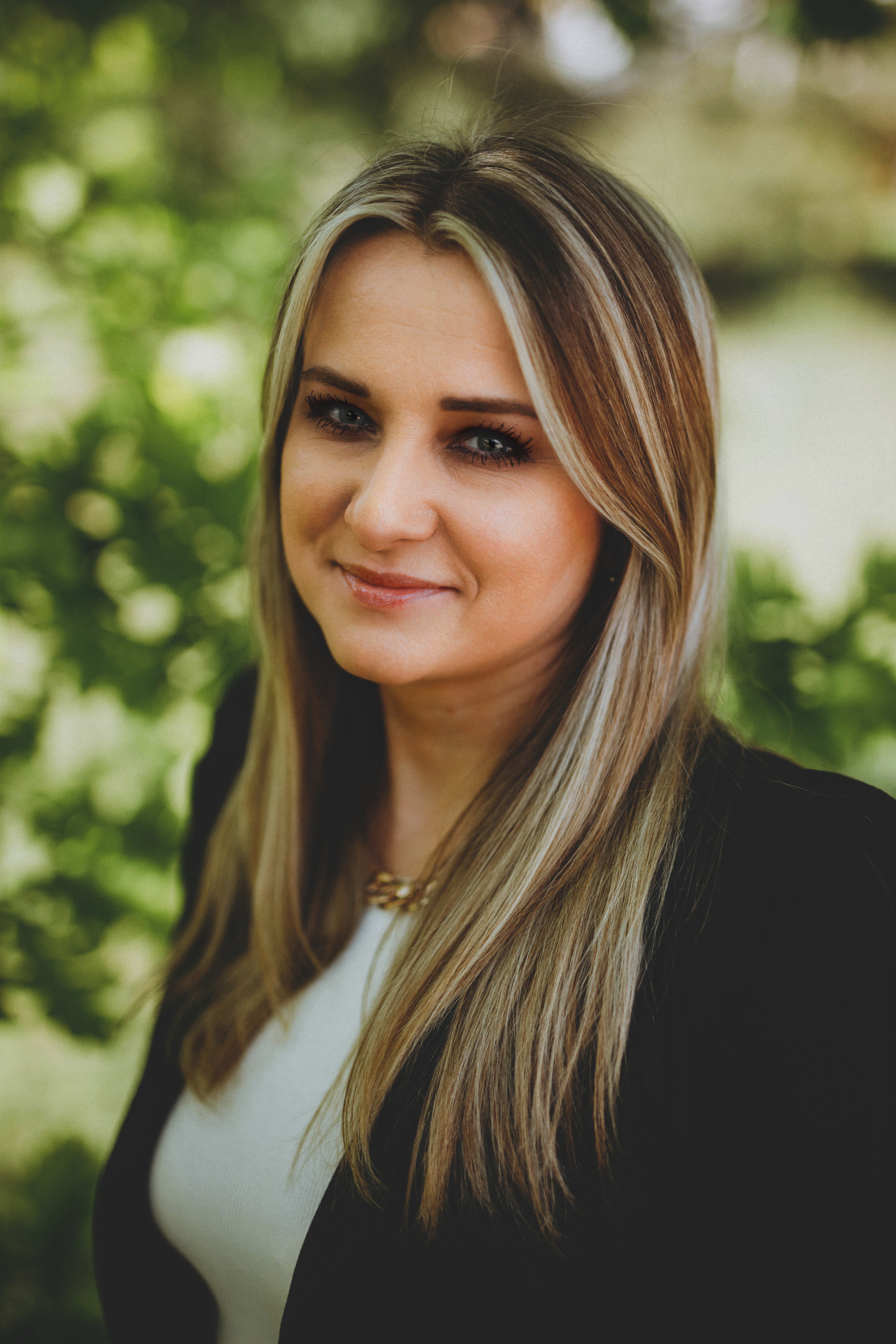 Magdalena Chirko, who coordinated the Hajnówka project
Magdalena Chirko, who coordinated the Hajnówka project
There are, of course, more such positive stories. Polish officials traveled to Norway, and Norwegian officials traveled to Poland. Seeing photos from these meetings, someone might say that it was a pretty good vacation. However, when you talk to our local government officials, they draw attention to the substantive benefits of such visits. The exchange of experiences may not be something tangible that can be built with indicators. But it certainly opens minds and allows you to learn from each other.
This was the case, for example, in the cooperation between Hrubieszów and the Norwegian Elverum. Our officials observed on site how the Jotuntoppen residential care center operates, watched the work of participants in the Askeladden textile workshops, and the functioning of the Sundsvol activity center.
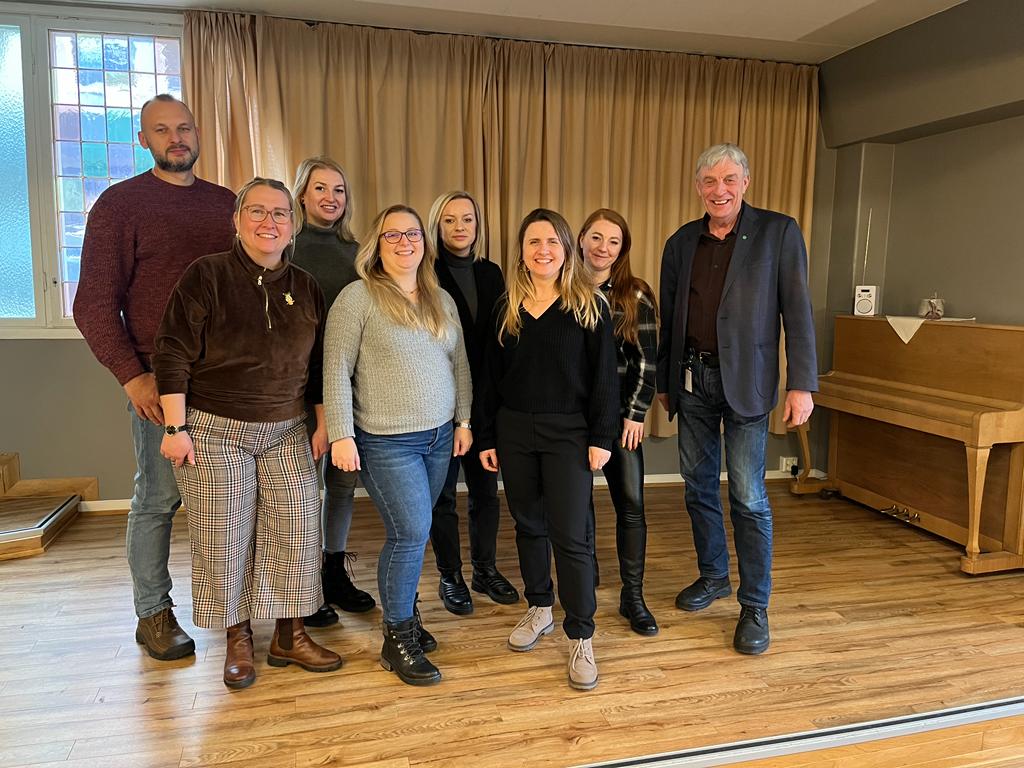
Visit of Hrubieszów local government officials in Elverum, Norway (Photo: Hrubieszów City Hall)
We Have Something to Be Proud Of
"These visits also showed us that we have nothing to be ashamed of. Norwegians also drew from our experiences. I observed a change in the approach of Polish local government officials over time. During the first visits to Norway, I had the impression that they were a bit more withdrawn and insecure. But with each subsequent visit, the change was visible. They went to Norway with the conviction that they had something to offer" – notes Kamil Wieder.
What could we boast about in Norway?
"For example, how our senior activation centers operate or smart solutions in towns" – says my interlocutor.
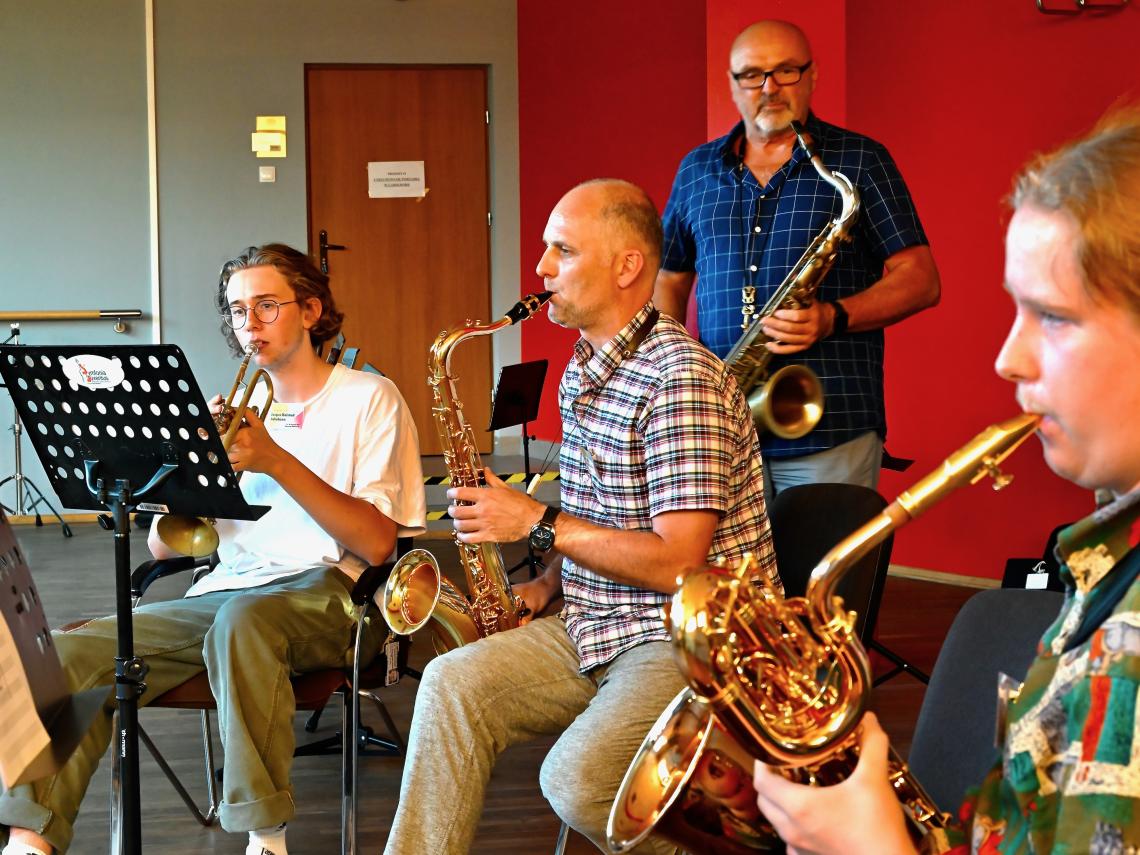
Norwegian musicians at workshops held as part of the 7th Polish Jazz Festival in September 2023 (photo: Tomaszów Mazowiecki City Hall)
He adds that many Norwegian local governments have similar problems.
"Sometimes they lack funds, sometimes qualified employees, sometimes complicated law hinders action. Just like us" – he emphasizes
Good personal relationships, such as Magdalena's from Hajnówka and Heidi's from Alta, are an additional benefit. Talking to local government officials, you can often hear that cooperation has turned into friendships that last to this day.
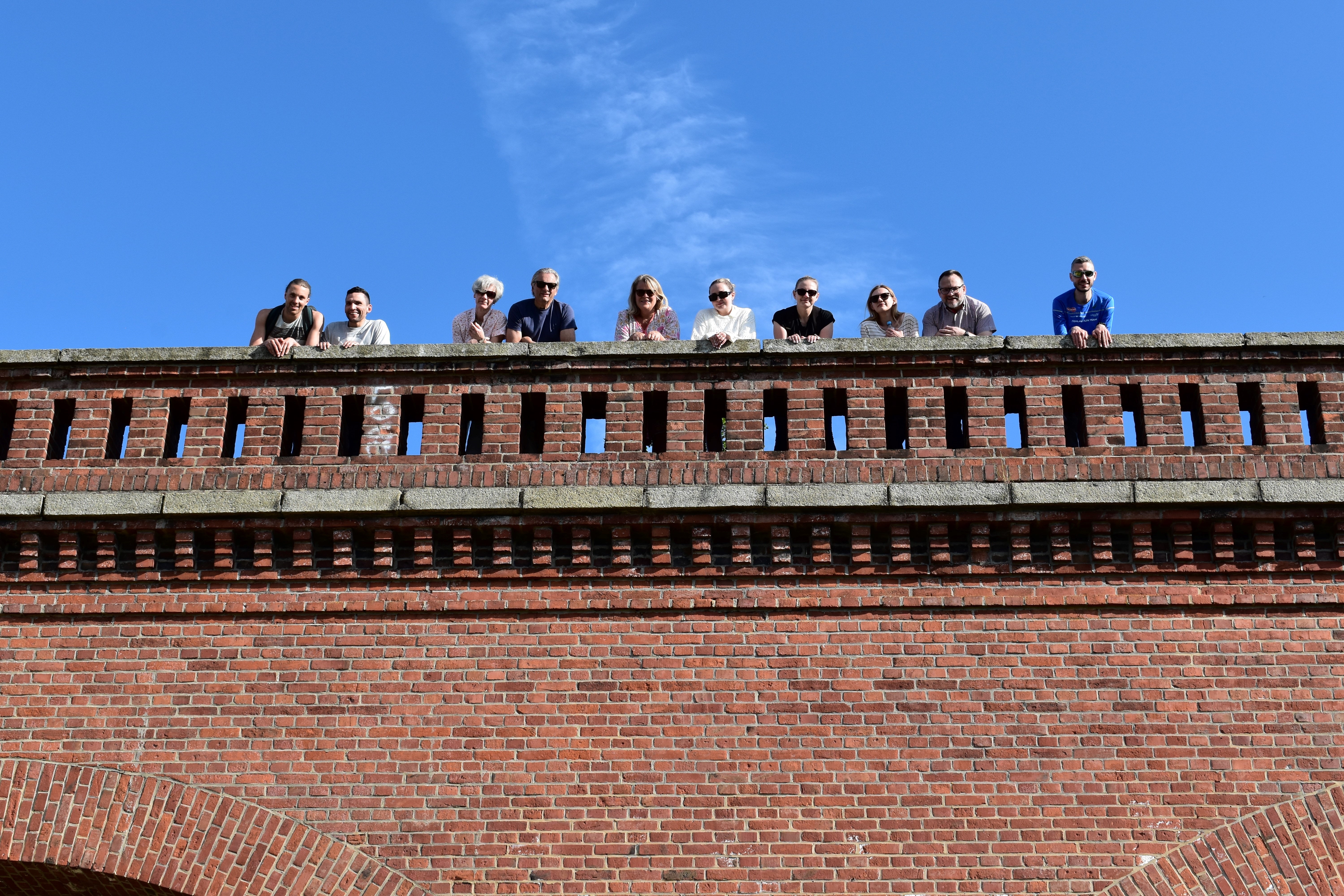 Officials from Jarocin and the Norwegian municipality of Ås in Jarocin. From left: Martin, Shane, Marianne, Alexander, Ellen, Agata, Ula, Martyna, Przemek, and Tomek (photo: Jarocin City Hall)
Officials from Jarocin and the Norwegian municipality of Ås in Jarocin. From left: Martin, Shane, Marianne, Alexander, Ellen, Agata, Ula, Martyna, Przemek, and Tomek (photo: Jarocin City Hall)
Happy Ending Despite Difficulties
However, to avoid it being too rosy, let's also talk about what was difficult in the Local Development Programme. Both Kamil and other participants point to the too short project implementation time. Elita Cakule, head of unit at the Norwegian Association of Local and Regional Authoritiess, talks about this in a film summarizing the conference closing the program.
"We had too much time to prepare the program and projects, and then for their approval. And we had too little time for implementation" – states Elita Cakule.
 Elita Cakule from the Norwegian Association of Local and Regional Authorities, together with beneficiaries and project partners, presents bilateral activities during the Local Development Programme's concluding conference in November 2024
Elita Cakule from the Norwegian Association of Local and Regional Authorities, together with beneficiaries and project partners, presents bilateral activities during the Local Development Programme's concluding conference in November 2024
Adrian Wilhelm Kjølø Tollefsen, mayor of the Øvre Eiker municipality, expresses himself in a similar tone.
"The biggest challenge in cooperation was the time we had to implement the actual projects" - notes the Norwegian offical.
Marta Majewska, mayor of Hrubieszów, draws attention to the time pressure in the same film. Although she notes that this pressure was motivating. She also mentions other obstacles.
"We encountered a number of obstacles on our way that we could not have foreseen. I mean the pandemic or the armed conflict in Ukraine right at our border" – says the mayor of Hrubieszów.
The pandemic completely changed our social life. It also did not spare the Local Development Programme.
"We had to extend the call for proposals deadline and we changed its regulations. At one point, real life was replaced by online. Together with our beneficiaries, we learned a new reality" – says Kamil Wieder.
In turn, Russia's aggression against Ukraine affected price increases, and this in turn affected the implementation of the projects themselves.
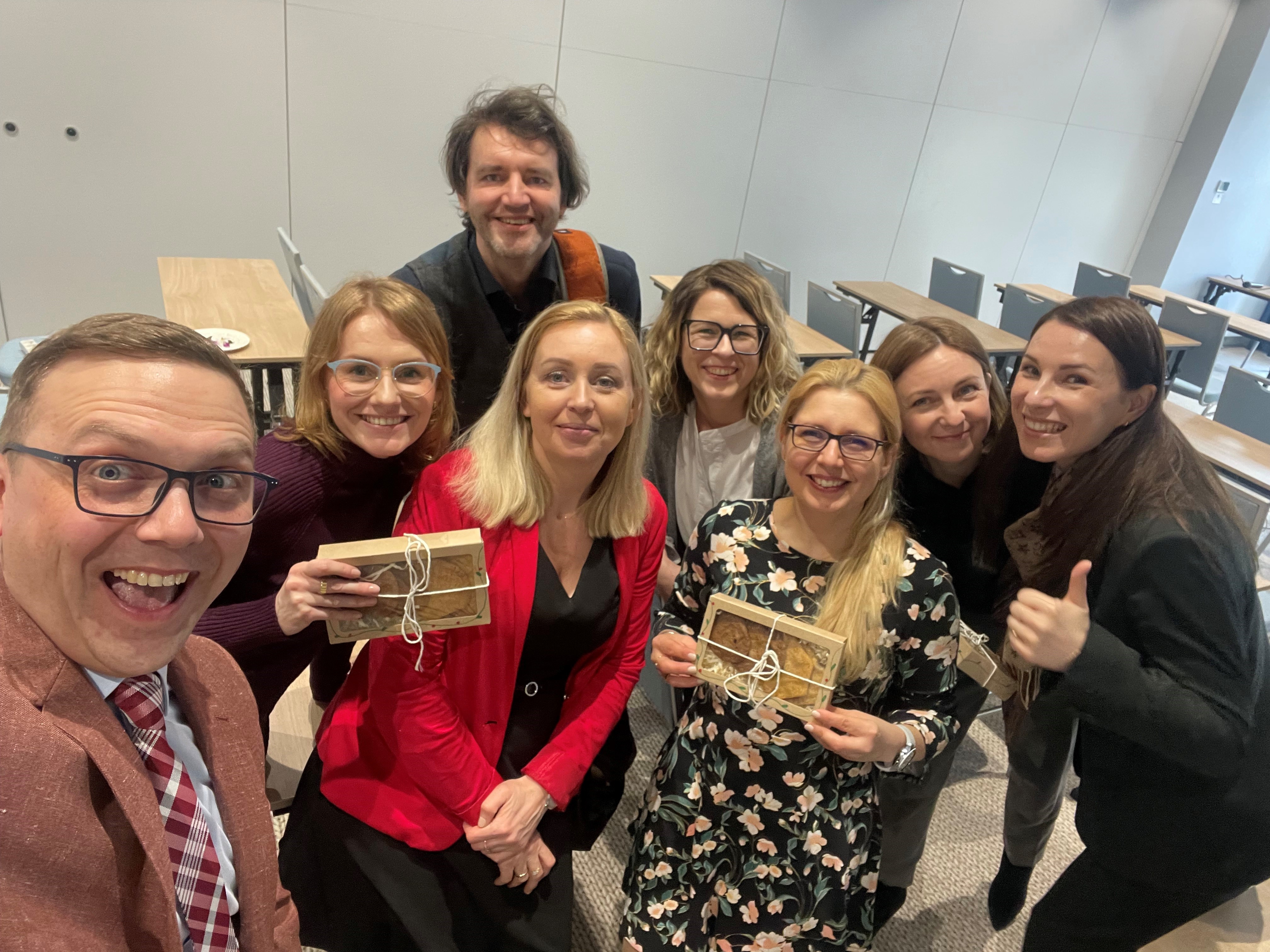 Kamil Wieder and his team, the Local Self-Government Support Unit at the Ministry Development of Funds and Regional Policy.
Kamil Wieder and his team, the Local Self-Government Support Unit at the Ministry Development of Funds and Regional Policy.
"Despite the difficulties, we have a happy ending. The greatest success of this program is, of course, the specific projects and changes in cities that residents benefit from. But there is also something less tangible - building the institutional capacity of local governments. Working on this project showed that it is worth cooperating, that it is worth breaking down silos, that it is worth creating task forces that include people from various organizational units. Local government officials tell us that residents come and ask when the next activities will be. In my opinion, it's hard to get a better review" – concludes Kamil.
Want to know more?
Visit the database of good practices shared by cities participating in the program.
Read the summary of the conference closing the programme.
Watch the video created after the conference.
Read our articles about projects implemented within the programme:
About the article
The author of the article is Paweł Nowak (Communication and Promotion Unit, Department of Assistance Programmes, Ministry of Development Funds and Regional Policy)

